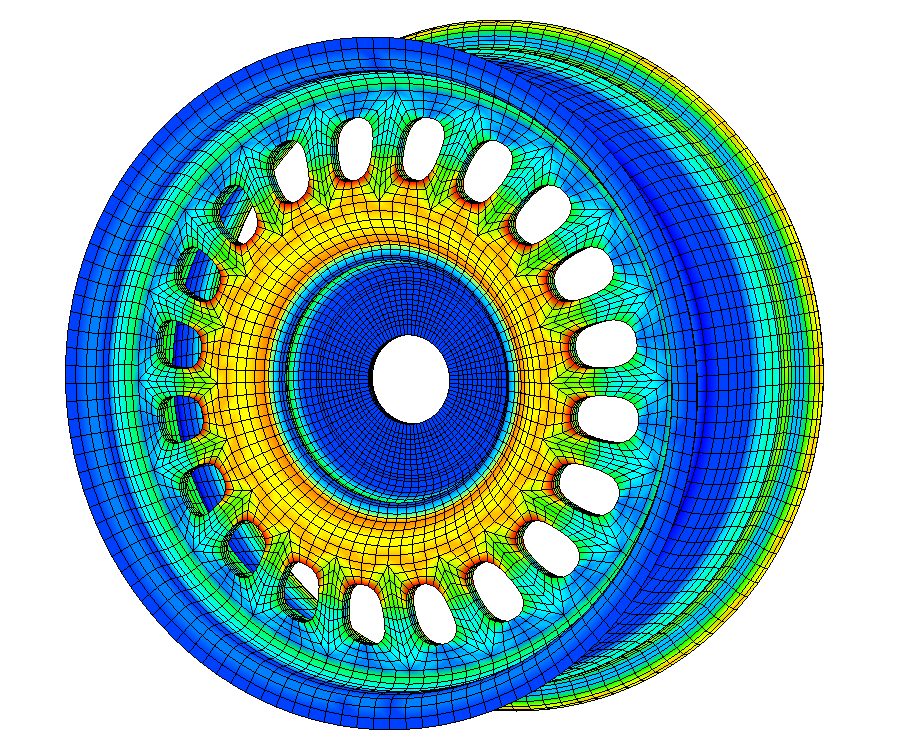FEM model of the wheel
In the LBF®.WheelStrength software the areas of the wheel relevant to rigidity are transferred from the CAD geometry to a FEM model that is suitable for the numerical simulation. This model is constructed with tetrahedron volume elements with square displacement function.
The FEM calculation is performed via a linear-elastic material behaviour with the respective FEM code.

Illustrative FEM model (click to enlarge)
Tire model: LBF®.TireID
In order to be able to generate realistic strains in the wheel or wheel hub FEM model, it is absolutely essential that the tire is considered as a load-transmitting element in the road-tire-wheel impact chain.
However, the exclusive FE modelling of characteristic tire properties (hyper-elastic material, reinforcement sections and tire pressure) alone would involve a great deal of time and expense, while the emphasis of the assessment and evaluation should be on the wheel or wheel hub.
Development of LBF®.TireID
Therefore, LBF®.WheelStrength offers a physical tire model correlated with the tire dimensions (tire load function) to illustrate the
transmission of load through the rolling wheel. The tires were identified as part of experimental stress analyses in a rolling test facility of Fraunhofer LBF. Thus driving-relevant load combinations were discharged into the rolling wheel through an approximately level tread shuffle.
LBF®.TireID as a component of LBF®.WheelStrength
In the LBF®.WheelStrength pre-processor, the tire models “Standard” and “Heavy Truck” can be selected at present. To generate the corresponding tire load function according to LBF®.TireID as an element of the software, the user simply needs to enter the main dimensions of the tire such as width, height-width ratio and diameter, tire pressure and the vertical tire rigidity. The load constraint in terms of transmission of force in the rim flange and shoulder with the tire load function according to LBF®.TireID is automated in the pre-processor.
